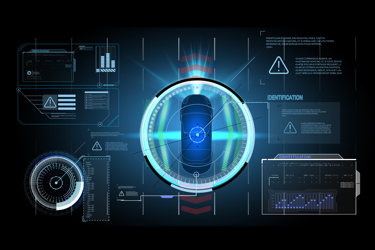How mmWaves Are Helping Make Roads Safer: The Latest In Occupant Detection

By John Oncea, Editor

A Toronto startup is helping keep the roads safe by measuring drivers’ vital signs to determine if there’s any fatigue or possible medical problems. It’s also making sure that toddlers aren’t accidentally left in the car. The secret? Millimeter waves.
Millimeter waves (mmWave), due to their high-frequency characteristics, provide significant advantages over conventional microwave frequencies such as wider bandwidth and higher data transfer rates. These advantages combined with applications including 5G, security screening, medical imaging, and automotive radar, are creating a dynamic, rapidly growing market.
Several of the industry’s major players – including Texas Instruments, Infineon, Arrow Electronics, MediaTek, NXP Semiconductors, Vaar, Muniu Technology, and Calterah Semiconductor Technology – are looking to take advantage of the opportunities mmWave technology has to offer. These companies are focusing on automotive mmWave sensors and industrial mmWave sensors and specific uses such as automobile front long-range radar, occupant detection radar, building automation, security guard, robotics, traffic monitoring, and automatic parking.
Our friends at IEEE wrote about Pontosense, a provider of wireless sensing integration technologies that developed a sensor they believe could help reduce the number of accidents caused by impaired driving and could protect children left in hot cars. Let’s take a look at Pontosene’s Wireless Intelligent Sensing millimeter-wave radar system (WISe system) and how it measures the driver’s vital signs including heart rate and breathing to detect fatigue and possible medical emergencies.
A Look At The WISe System
Pontosense – based in Toronto with offices in Japan, Germany, and China – was awarded IEEE’s HITC Award for Excellence in Hyper-Intelligence (Industrial Impact Award) for its WISe solution last December. The WISe solution monitors biometric vitals such as heart rate, breathing, and heart rate variability (HRV). It is the only in-market mmWave wireless sensor used in the automotive industry for child presence detection and driver monitoring use cases.
According to the Newswire release, “Early attempts to use radar systems to sense physiological signs date back decades, including work by J.C. Lin and others. At the time, and until recently, every unwanted movement of the body had a profound impact on reflected signals and resulted in inaccurate data.”
Today, however, contactless vital sign detection and HRV monitoring are a reality with biometrics accuracy comparable to medical-grade devices, even in noisy environments. According to Pontosense, WISe uses RF sensors to capture the tiniest micromovements by sending out mmWaves that are reflected when they interact with subjects in their path. Micromovements like breathing or heartbeats create different reflected signals that our AI algorithms analyze to derive critical biometrics.
Typically, power consumption is about 1 W and the sensor is designed to detect through multiple layers of clothing and more importantly sunshades and blankets to detect micromovements from a sleeping baby in a car seat. The sensor detects the small micromovements from people such as breathing and heartbeats to differentiate from objects.
In addition, WISe’s algorithms eliminate road noise and extract key biometrics to detect passenger comfort, such as motion sickness or drowsiness. Its low noise sensor system with ML strategies determines where people are in the car – eliminating the need for seat sensors and automating in-cabin safety and comfort solutions. Finally, the sensor solution performs with nearly 100% accuracy when classifying passengers and ensuring the detection of children left alone in cars.
“This revolutionary technology has immediate and future applications,” said Pontosense CIO Muxin Ma. “Current government regulations stipulate that cars must be able to detect children left behind. WISe will save the lives of hundreds of children every year. In the future, companies will leverage biometrics to identify new opportunities for developing value-added services.”
The role WISe could play in autonomous vehicles can be significant as well. “For example,” said Pontosense cofounder and CTO Professor Yihong Qi, “sensors’ health metrics can predict emergencies. If the car is autonomous, how will it slow down if the passenger feels sick? The cars of tomorrow need in-cabin biosensing to thrive.”
How WISe Makes Roads Safer
WISe works wirelessly as opposed to current in-car driver-monitoring systems which use cameras or contact sensors. “The system uses RF sensing to capture echoes of the micromovements made by the driver’s or passenger’s body caused by heartbeats and breaths,” notes IEEE. “WISe detects changes in the reflected signal’s phase — the relationship between radio signals that share the same space and frequency — to read the micromovements and vital signs.”
The mmWaves are transmitted from a 10-millimeter antenna at 24, 60, or 77 gigahertz, depending on the vehicle, and when “the waves are reflected to the sensor, the received echo allows WISe to “see” the small movements and gather data about the person’s health status.” WISe checks heart rate variability and respiration rate daily to determine the driver’s normal range. All information is sorted in an encrypted microcomputer, as well as external servers.
“The sensors can be installed in different locations in the vehicle, including behind the rearview mirror, behind the instrument panel, and between the driver and passenger seats,” writes IEEE. “The device—about the size of a coin, with a 40-millimeter diameter—uses less than 10 milliwatts of power.”
